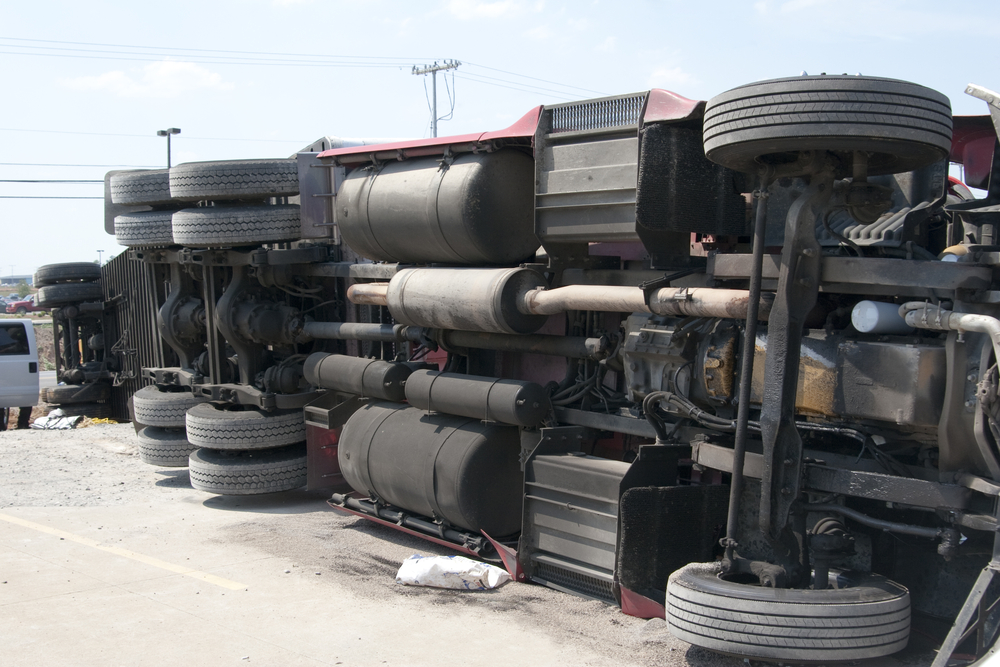Midwest Again Target Of Crushing Storms
Dec 16, 2021
Another severe weather event made havoc of the Midwest and Great Plains on Wednesday, December 15th with hurricane-force winds and possible tornadoes reported in Nebraska and Iowa and other states.
The wind affected traffic on many roads including U.S. Highway 151 in eastern Iowa. A semitrailer rolled onto its side due to the severe winds.
The storm changed its path toward the Great Lakes into Canada on Thursday. High winds, snow, and menacing conditions continued to ravage the upper Great Lakes region on Thursday.
More than 400,000 homes and businesses were without power Thursday morning in Michigan, Wisconsin, Iowa, and Kansas, according to poweroutage.us, which monitors electric utility reports.
More than 20 tornadoes were reported on Wednesday in the Plains States of eastern Nebraska and Iowa, according to preliminary accounts from the Storm Prediction Center.
Wednesday’s reports also detailed hurricane-force wind gusts of 75 mph or higher, the worst of any day since 2004. According to one meteorologist with the National Weather Service in Nebraska, the number of severe windstorms at one time would be unusual anytime of the year, but to have this happen in December is really abnormal.
The strong winds whipped up dust that reduced visibility to zero west of Wakeeney, Kansas, according to the state’s Department of Transportation. It added that at least four semitrailers were blown over. Kansas authorizes closed Interstate 70 from the Colorado border to Salina, and all state highways were closed in nine counties in Kansas.
The National Weather Service announced high wind warnings for an area extending from New Mexico to Upper Michigan, Wisconsin, and Illinois. Wind gusts were clocked at up to 80 mph in the Texas Panhandle and western Kansas, a record for that region. The weather service reported that there were gusts of 107 mph and 100 mph in Russell, Kansas on Wednesday.
Officials cautioned about possible fires along the western edge of the weather system because of dry conditions.
Once again, scientists are blaming climate change for the severe weather. However, specific analysis and computer simulations need to be considered before there is a clear connection.
The unseasonable warm weather on Wednesday was due to record high ocean temperatures in the Gulf of Mexico that would not have occurred without global warming, said a climate connections meteorologist at Yale University.
Wisconsin was also affected by strong wind gusts. There were also reports of tornadoes in Minnesota. If the reports can be confirmed, it would be the first tornadoes ever recorded in the state in December. The possible twisters hit near Albert Lea and Plainview. Heavy damage was reported.
Residents of Kansas experience strong winds as high as 98 mph on Wednesday after earthquakes rocked the state on Tuesday and Wednesday, according to the Topeka Capital Journal. More than 100,000 utility customers were without power Wednesday night. It was expected that full service would not be restored for several days.
A minimum of 13 tornadoes were reported across Nebraska and Iowa, said a representative of the National Weather Service. The weather event was considered very unusual. Winds pushed smoke into Iowa from wildfires in Kansas.
Some buildings were flattened in Greene County, Iowa. The damage could have been caused by a tornado that reportedly crossed the county.
Major damage was reported in the southern section of Jefferson, Iowa. Details weren’t immediately available.
Meanwhile, California and Nevada were blanketed with snow and pummeled with heavy rain on Tuesday. Several inches of rain deluged the Los Angeles area and as much as 6 feet of snow fell in the Sierra Nevada Mountains on Tuesday and Wednesday. Interstate 5 was closed at the Oregon-California border on Wednesday due to Blizzard conditions.
The storm caused problems throughout the state and raised the possibility of mudslides in many areas affected by wildfires. Many places were evacuated in southern California as a result.
About 7 inches of rain pummeled an area of Santa Barbara County before dawn on Tuesday. The rain caused flash flooding in many areas.
In Nevada, more than 6 feet of snow fell at the Mt. Rose ski resort earlier in the week. Another 1 to 2 feet fell in the region on Wednesday.
The storm went on to the Las Vegas vicinity and on into Phoenix.
According to poweroutage.us, as of 11:09 on Thursday, December 16th, the worst outages by state were occurring in:
- Michigan 239,706
- Wisconsin 141,636
- Iowa 40,495
- Kansas 37,439
- California 36,946
- Missouri 22,482
- Colorado 20,914
- Kentucky 12,148
- Minnesota 12,085
- Illinois 11,085
Severe weather during this second full week of December has been devastating in many areas of the United States. This time it was snow, tornadoes, and severe winds that plunged hundreds of thousands Americans into darkness. No one wherever they live in the U.S. is safe from a severe weather events. That’s why it’s best to be prepared and rely on a standby generator to provide your home with precious power when the local electric utilities can’t.
APElectric offers a wide range of generators from some of the most popular manufacturers in the country. All of these units are equipped with state-of-the-art technology including WI-FI, so that you can control the generator and receive valuable information about its condition from anywhere in the world. Visit the company’s website for more information.
